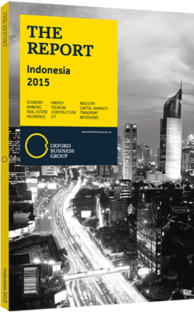Modern role for batik in Indonesia
One of Indonesia’s most highly developed art forms, batik has been around for a long time but is not at all out of fashion. Everyone wears it, from the aristocrats participating in an evening event, to local and foreign businessmen who go everyday to the office. It is beautiful, colourful and there are endless variations on the theme. But what is it? How it is made? What are its origins, and how is it used today?
Meaning & Making
The term batik is thought to be derived from the word ambatik which means “a cloth with little dots”. The suffix tik means little dot, drop, point or to make dots. Batik may also originate from the Javanese word tritik which describes a resist process for dyeing whereby the patterns are reserved on the textiles by tying and sewing areas of the cloth prior to dyeing, similar to tie-dye techniques.
Towards the middle of the 19th century craftsmen began using copper moulds to wax cloth. This method was faster than using the pipette and allowed production of identical batik. During the 20th century batik began to be produced in factories using the screen-printing method. Nowadays, handcraft batiks still exist, but what is sold is mostly industrial.
To make batik, Indonesian artisans use a kind of copper pipette containing liquid wax to make an elaborate drawing on a cut of fabric. When the wax is dry, the fabric is dipped in dye and the waxed fabric, being waterproof, retain its original colour. Often this procedure is repeated several times with dyes of various colours so as to create complex designs.
Materials
Silk or cotton are usually the first choices of materials to make a batik. The dyes are obtained from the leaves, wood and bark of trees and local spices, but synthetic dyes are also quite common. Before the advent of wax, the tradition was to use plants, animal fats, and even mud to create the designs. Today, the wax is often synthetic, however it is still common to also use a mixture of beeswax and paraffin.
Nobody knows exactly when and where batik was made for the first time. Experts disagree about the precise origins of batik, and samples of dye-resistant patterns on cloth can be traced back 1500 years ago to Egypt and the Middle East. Further east, fragments have been found in China dating back to the sixth century. Samples have also been identified in Turkey, India, China, Japan and West Africa from past centuries.
Javanese Patrons
It is not clear when this decorative technique began to spread to and around Indonesia, but it is generally believed that batik was originally reserved as an art form for Javanese royalty who were known to be great patrons of the arts. Indeed, they provided support to develop many art forms, such as silver ornamentation, wayang kulit (leather puppets) and gamelan (orchestra). In some cases the art forms overlap. The Javanese dalang (puppeteer) was an important source of batik patterns.
The traditional way of wearing drape and batik is influenced by local beliefs and superstitions. There are about 3000 types of batik that are commonly used all over Indonesia. Many provinces have typical designs and colours. The batik of the north coast of Java, for example, has bright colours and floral patterns and designs of birds and other animals. That of the central part of the island, however, has a narrower range of colours and mostly geometric motifs.
National Symbol
High-quality handmade batik is very expensive and the production of such works is limited. However, in a world that is dominated by machines there is an increasing interest in handmade materials, such as batik. Both for locals, as well as for foreigners visiting or living in Indonesia, having a batik dress or business shirt is a sophisticated sign of elegance, especially when it has been tailor-made.
In September 2009, UNESCO officially announced its recognition of batik as Indonesia’s cultural heritage and the Indonesian authorities subsequently appealed to the people of Indonesia to wear batik clothes as a sign of national belonging. Today, wearing batik is a matter of pride and Friday has become the “batik day” both for locals and foreigners.
You have reached the limit of premium articles you can view for free.
Choose from the options below to purchase print or digital editions of our Reports. You can also purchase a website subscription giving you unlimited access to all of our Reports online for 12 months.
If you have already purchased this Report or have a website subscription, please login to continue.

